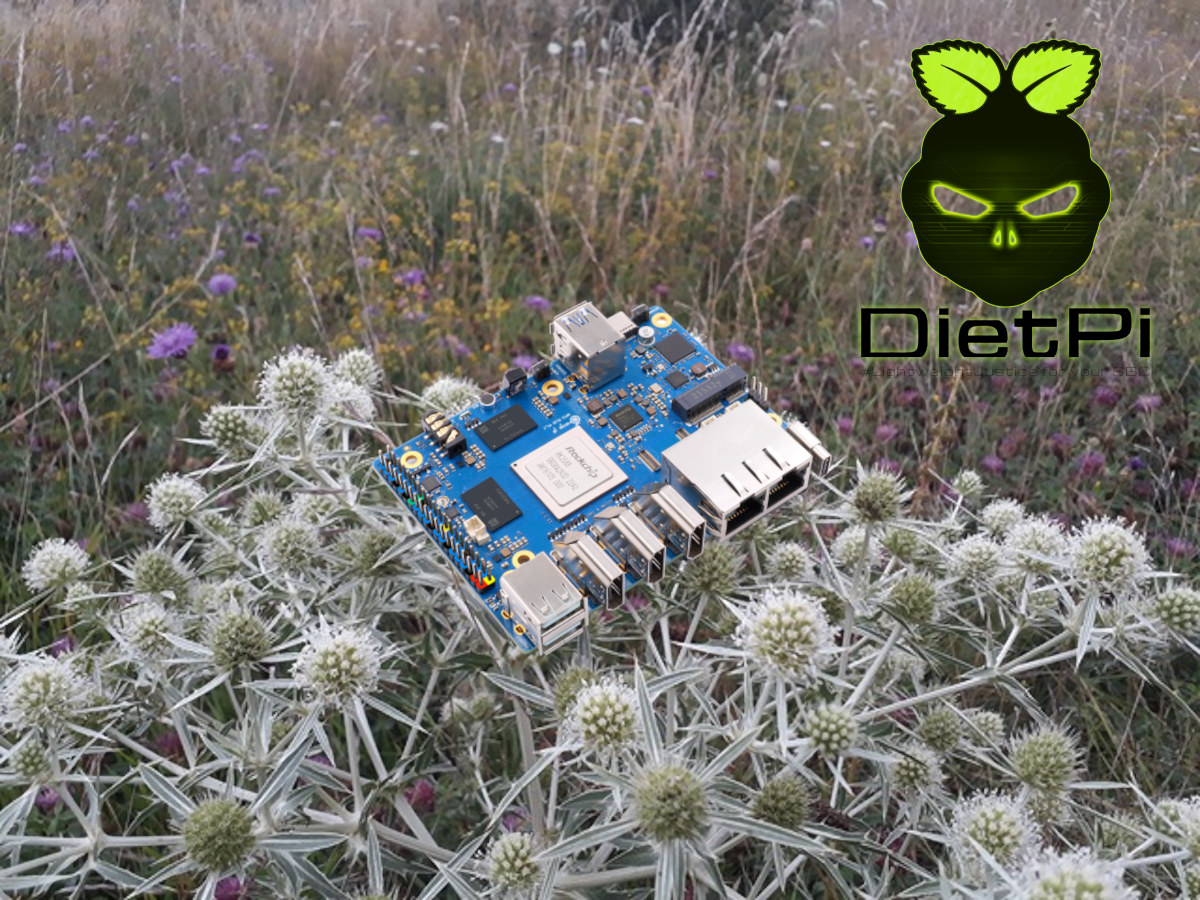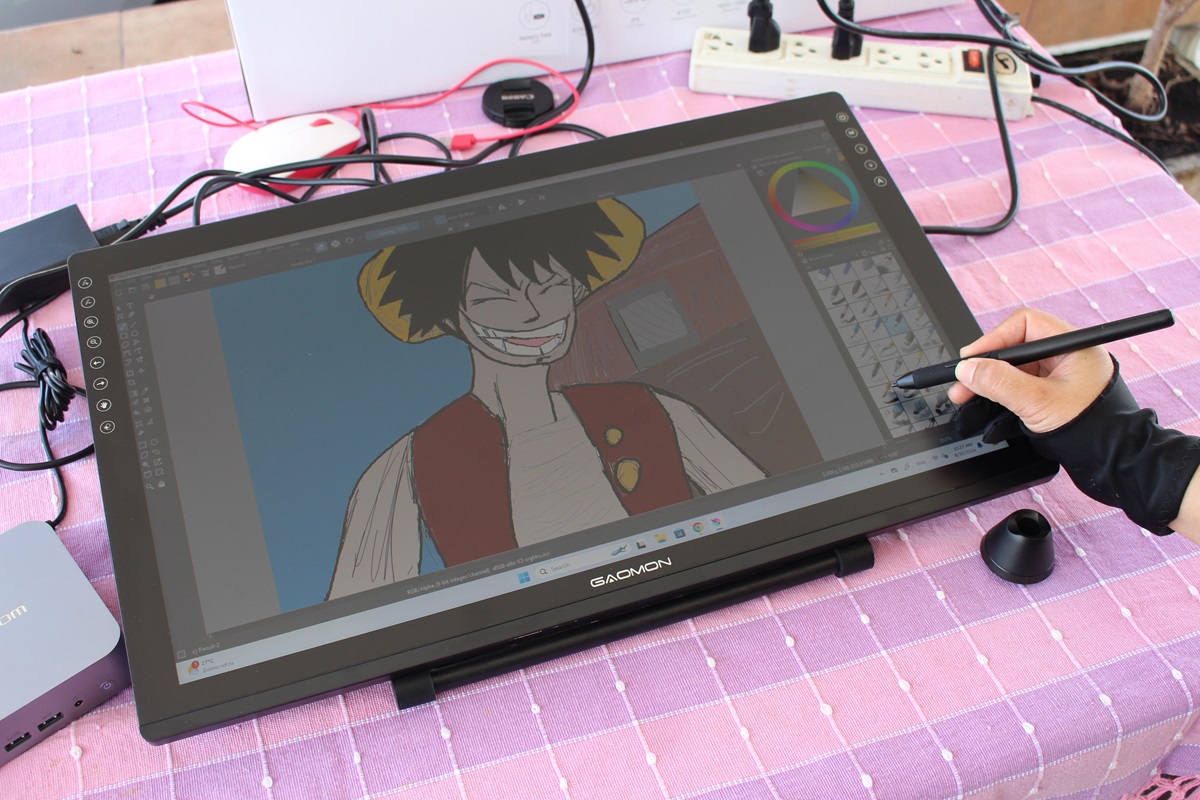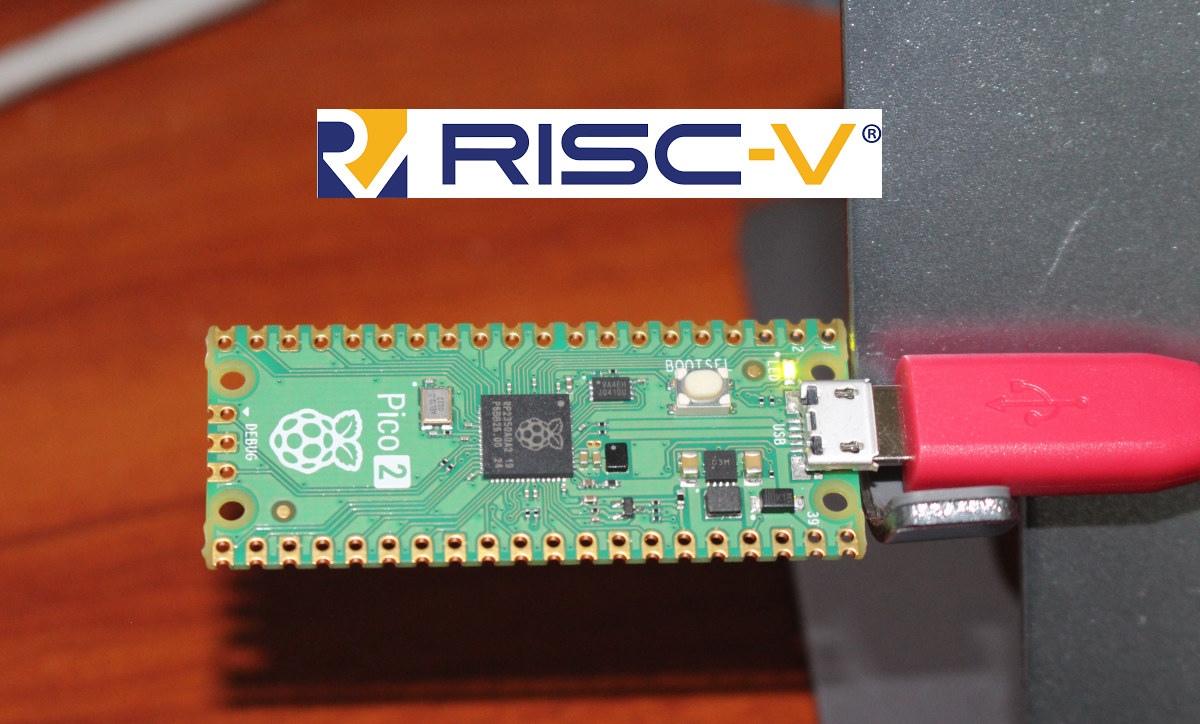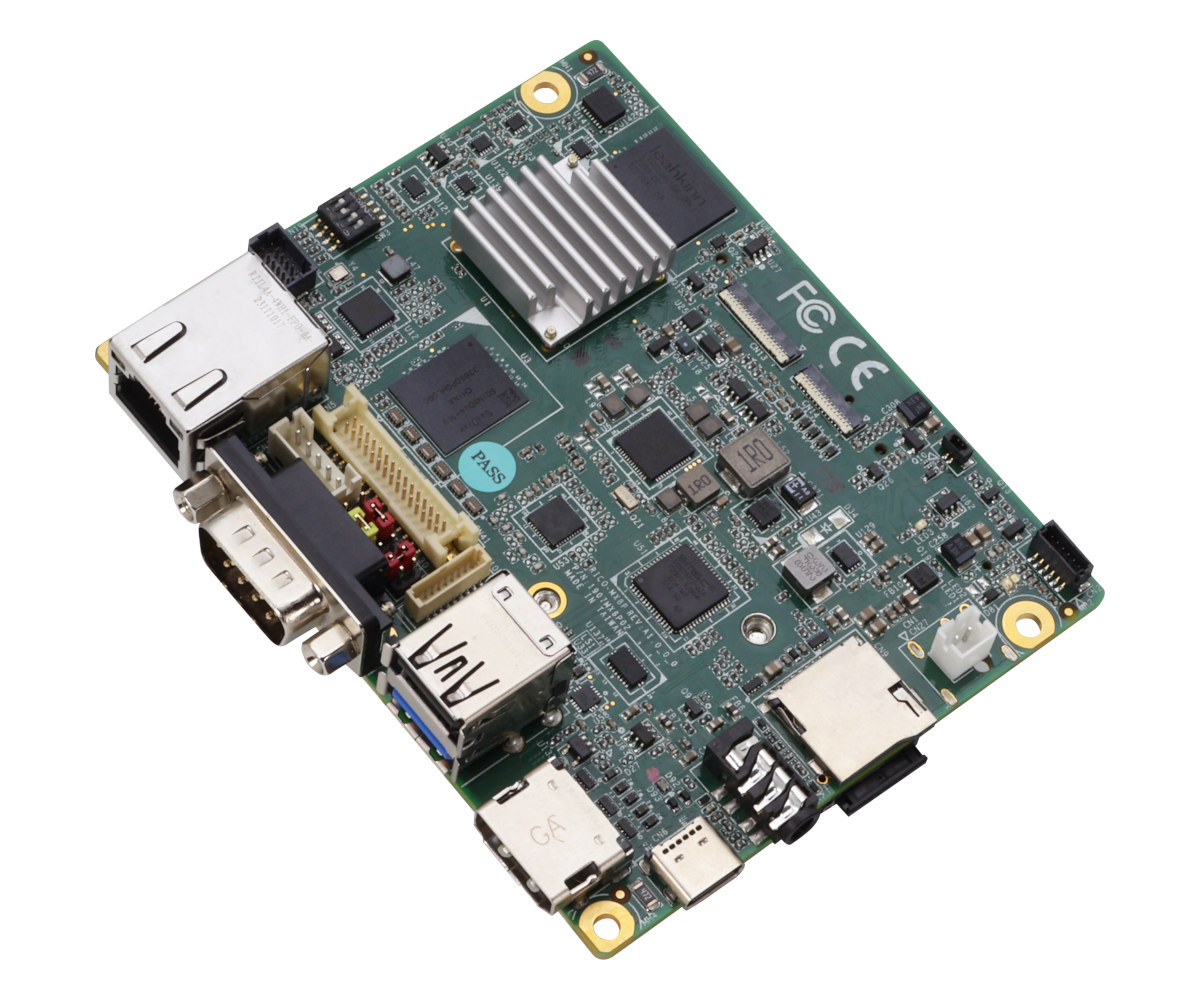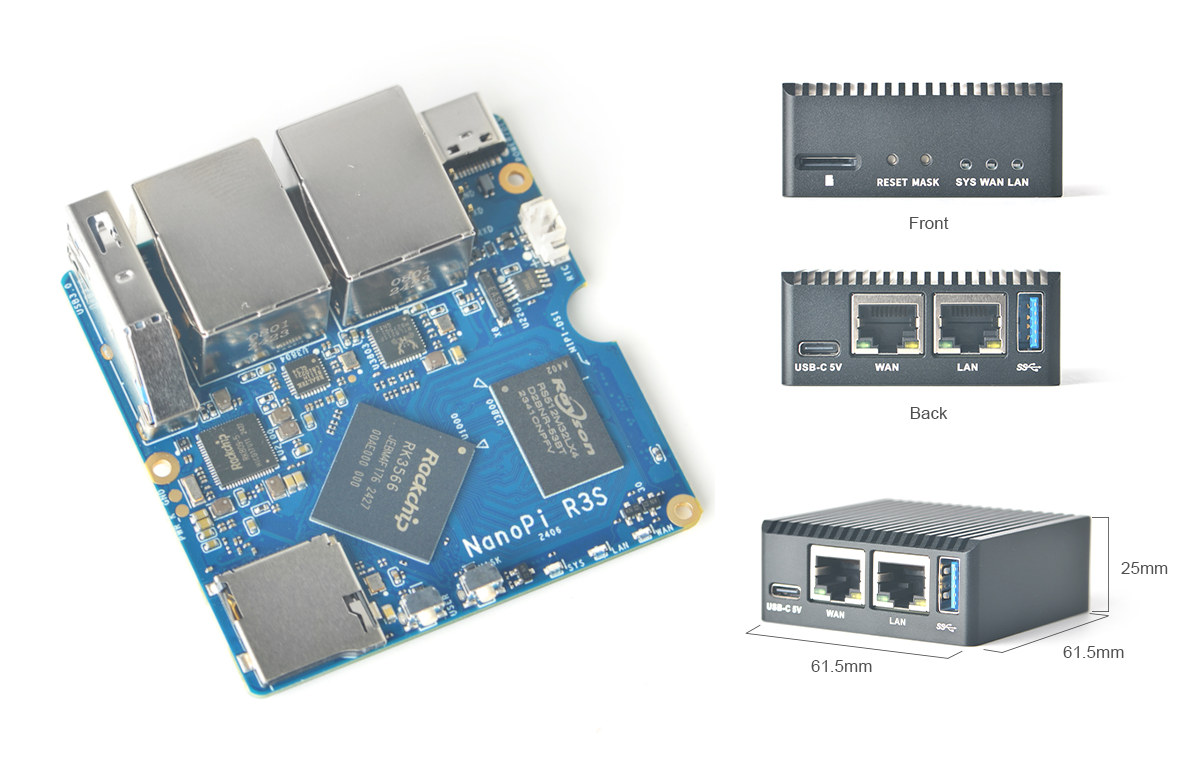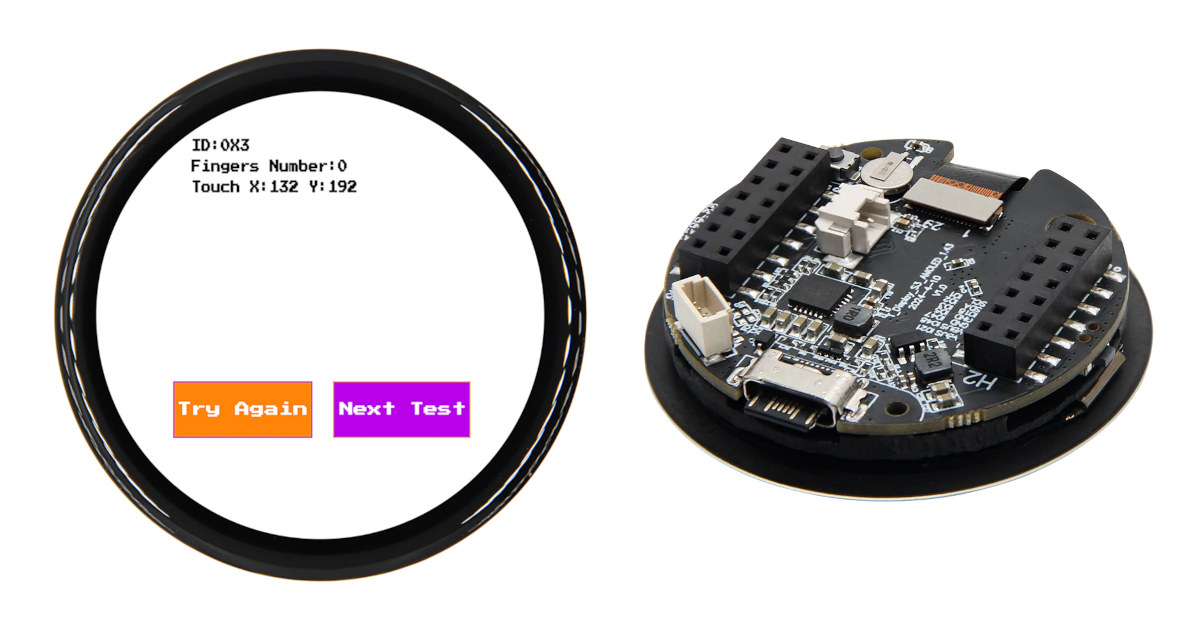Armbian and DietPi are two separate projects that provide Linux-based OS images optimized for Arm-based single board computers. The last time we had a look at both projects was in June with the release of Armbian 24.5.1 and DietPi 9.4, but there have been several updates since then including the releases of the latest DietPi 9.7 and Armbian 24.8 Yelt just a few days ago. So let’s check out the latest changes. DietPi 9.7 DietPi is a lightweight Debian-based Linux distribution for SBCs and server systems that ships as a minimal image but users can install any packages they want, including the ones required for desktop environment, to match the requirements of the applications. It’s notably used by the Linamp project – a Raspberry Pi 4-based project that brings WinAMP to real life – that we covered a few weeks ago. DietPi 9.7 was released on August 25, 2024 with […]
GAOMON PD2200 pen display review – A 21.5-inch drawing tablet tested with Windows 11, Ubuntu 24.04, Krita software
Today, we’ll review the GAOMON PD2200 pen display, a 21.5-inch drawing tablet with 1920 x 1080 resolution, and an AP32 stylus with 8192 levels of pressure sensitivity. It allows you to draw and write in the same way as you would with a pen and paper. It can also be used as a standard HDMI monitor and is similar to the smaller, but higher resolution (2560 x 1440) HUION Kamvas Pro 16 (2.5K) we reviewed last April. HUION and GAOMON are different brands, but based on the shipping information, they may be made by the same company… Guangdong Gaomon Technology sent us a sample of the GAOMON PD2200 drawing tablet for review. We will test the device as an external display in Windows 11 and Ubuntu 22.04 and as a drawing tablet using the stylus with Krita open-source software that works fine in both Windows and Linux. GAOMON PD2200 Pen […]
Using RISC-V cores on the Raspberry Pi Pico 2 board and RP2350 MCU – From blinking an LED to building Linux
Raspberry Pi Pico 2 was released last month with a Raspberry Pi RP2350 microcontroller equipped with two Arm Cortex-M33 cores and two 32-bit RISC-V “Hazard3” cores with up to two cores usable at any time. So in this guide, we’ll show how to use the RISC-V cores on the RP2350 MCU, compare their performance against the Arm Cortex-M33 cores, and even build Linux for RISC-V for RP2350 boards that have PSRAM. Apart from the extra memory and more powerful cores, plus new features related to security and the HSTX interface, the Raspberry Pi Pico 2 and Pico will be very similar to the end user and the instructions in our article “Getting Started with Raspberry Pi Pico using MicroPython and C” remain valid. I don’t think there’s a MicroPython RISC-V image yet, so we’ll focus on running C programs on the RISC-V cores. A quick check with the Arm cores […]
Vantron HCAM26 WiFi HaLow IP camera offers up to 1km range
Vantron HCAM26 is an IP camera based on the company’s VT-MOB-AH-L sub-GHz 802.11ah WiFi HaLow module itself equipped with Morse Micro MM6108 RISC-V SoC and offering up to 1km range and better wall penetration than WiFi security cameras operating at 2.4 GHz or 5GHz frequencies. The Linux camera comes with 1GB RAM and 8GB eMMC flash, features a 5MP (2592 x 1944) camera sensor, supports AI features through a 2.0 TOPS NPU integrated into the main SoC, and is also fitted with a speaker and microphone for two-way audio, and a micro HDMI port to monitor the camera output. A 2,600mAh Li-ion battery powers the camera. Vantron HCAM26 specifications: SoC – Unname, but most likely Rockchip RV1126 CPU – Quad-core Arm Cortex-A7 32-bit vision processor with RISC-V core ISP – 14MP ISP VPU H.265/H.264 codecs Frame rate – 3840 x 2160 @30 fps + 1080p @30 fps encoding supported ; […]
AAEON RICO-MX8P fanless Pico-ITX Plus SBC is powered by NXP i.MX 8M Plus AI processor
AAEON has launched another Pico-ITX Plus SBC with the RICO-MX8P single board computer powered by an NXP i.MX 8M Plus SoC with a 2.3 TOPS AI accelerator and equipped with up to 8GB LPDDR4 and a 16GB eMMC flash. The fanless 100x80mm board offers a range of interfaces such as HDMI 2.0 video output, gigabit Ethernet, two USB 3.2 Gen 1 ports (one Type-C OTG, one Type-A), RS-232/422/485 DB9 connector, and a 40-pin FPC connector for optional daughter boards. All these features make the RICO-MX8P SBC suitable for digital signage, retail kiosks, and industrial control systems such as PLCs and telemetry. AAEON RICO-MX8P specifications: SoC – NXP i.MX 8M Plus AI SoC CPU Quad-core Arm Cortex-A53 processor @ up to 1.6 GHz Arm Cortex-M7 real-time core @ 800 MHz GPU – Vivante GC7000UL 3D GPU, Vivante GC520L 2D GPU VPU – 720p60 H.265/H.264 video decoder & encoder Optional AI accelerator […]
Maker Go RA4M1-R4 core board is a cheap Arduino UNO R4 Minima clone taking up to 50V DC input
The Maker Go RA4M1-R4 core board is another Arduino UNO R4 Minima clone but offered at a price point much lower than the original and the Waveshare R7FA4 Plus A (another clone) since it shows up for only $0.99 on AliExpress with free shipping. Note that the ultra-low price is because of a “Welcome deal” on AliExpress, and the regular price is $7.76, so not everyone may get it for $1. About $8 is still cheap compared to the $20 (18 Euros) asked for the official Arduino UNO R4 Minima board. Let’s look at the clone in more detail to find out if they’ve made any changes to the board. Maker Go RA4M1-R4 core board specifications: Microcontroller – Renesas RA4M1 Arm Cortex-M4F MCU @ 48 MHz with 32KB SRAM, 256KB flash USB – 1 x USB Type-C port for power and programming Expansions – Arduino UNO female + male headers […]
NanoPi R3S – A low-cost Rockchip RK3566 SBC and dual gigabit Ethernet router
FriendlyELEC NanoPi R3S is a low-cost Rockchip RK3566 SBC and router with two gigabit Ethernet ports, a USB 3.0 host ports, a USB-C port for power and data, a microSD card slot, Reset and Mask buttons, and a few LEDs. It also features a MIPI DSI connector for people wanting to connect a display. Its design and size are similar to the NanoPi R5C dual 2.5GbE SBC and router, so it could be viewed as a low-cost alternative with dual GbE, no M.2 socket for WiFi & Bluetooth, only one USB 3.0 port, and no HDMI video output. The company promotes it as an inexpensive platform for IoT applications, basic NAS solutions, and so on. NanoPi R3S specifications: SoC – Rockchip RK3566 CPU – Quad-core Cortex-A55 processor @ up to 2.0 GHz GPU – Arm Mali-G52 MP2 GPU NPU – 0.8 TOPS AI accelerator VPU 4Kp60 H.265/H.264/VP9 video decoder 1080p60 […]
T-Display-S3-AMOLED-1.43 – A 1.43-inch round AMOLED touchscreen display with an ESP32-S3 wireless MCU
We’ve already seen a few ESP32-S3 boards with an AMOLED display and plenty with round displays such as SB Components’ Dual Roundy, LILYGO T-RGB ESP32-S3, MaTouch ESP32-S3 Rotary IPS display among others, but I had yet to see an ESP32-S3 board with a round AMOLED display. That’s just what the LILYGO T-Display-S3-AMOLED-1.43 has to offer. The ESP32-S3 board features a 1.43-inch round AMOLED with 466×466 resolution and a capacitive touchscreen, a microSD card slot for storage, an RTC with backup battery, two 14-pin headers and a Qwiic UART connector for expansion, a USB-C port for power/charging and programming, and a 2-pin connector for a LiPo battery. T-Display-S3 AMOLED-1.43 specifications: SoC – Espressif ESP32-S3R8 CPU – Dual-core Tensilica LX7 microcontroller up to 240 MHz with vector instructions for AI acceleration Memory – 8MB PSRAM Wireless – WiFi 4 and Bluetooth 5.0 LE + Mesh connectivity Storage – 16MB SPI flash, MicroSD […]


